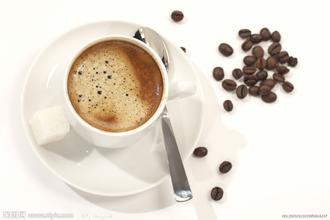Mantenin coffee beans with a slightly sweet taste introduce boutique coffee
The Japanese adopted stricter quality control more than ten years ago. After four manual bean picking and eliminating defective beans, they produced dark green and uniform gold mantin.This created another wave of market demand, and even Europe and America were crazy about it.
Aged mandheling, sweet as honey. Successful aging of the beans, will be the mantenin not elegant sour wear off. The sour ingredients are ripened and converted to sugar, making the coffee more rounded and sweeter to drink. Failed old mantnings are like coffee zombies, and the taste is hard to eat.
Mantenin Coffee-Features
Mantelin coffee is very rich in flavor, fragrant, bitter, mellow, with a little sweet. Most coffee lovers drink it as a single item, but it is also an indispensable variety for blending coffee.
Because mantning coffee beans themselves do not have acid characteristics, so the general special brewing methods, are based on mantning coffee beans, in the long-term insulation or preparation of iced coffee, are not annoying sour taste appears.
After roasting, the beans are very large. The raw beans are brown or dark green. The special aroma of caramel is like a mellow taste. Mandolin Coffee-Origin of Name
Mantenin is not the name of a region, a place, a port, or a coffee variety. How did it get its name?
In fact, it is a pronunciation error of the Mandheling ethnic group in Indonesia.
During the Japanese occupation of Indonesia in World War II, a Japanese soldier drank excellent coffee in a cafe, so he asked the owner, the name of the coffee, the owner mistakenly asked him where you are from, so he replied: Mandenin. After the war, Japanese soldiers recalled drinking "Mantenin" in Indonesia. So Indonesia asked the passenger to transport 15 tons of coffee to Japan, which was very popular. Thus the name of Mantelin spread, and the coffee merchant was now known as PWN Coffee Company. Mantelin coffee was produced in Sumatra, Indonesia, Asia, otherwise known as Sumatra coffee. The main habitats are Java, Sulawesi and Sumatra, 90% of which are Robusta species. The most famous of these is the mantelin produced in Sumatra. The finest of the fine traditional Arabica coffees produced in Sumatra North are marketed under the titles Lintong and Mandheling. Lintong refers to coffee grown in a small area southwest of Toba Lake in Lindong Administrative District. Small coffee plantations are scattered over a high, undulating clay plateau filled with ferns. Lintong coffee is grown without shade, without chemicals, and almost exclusively owned by small owners. Mandheling is a more general term that includes Lintong Lindong coffee and similar conditions for Diari[capital Sidikalang], Toba Lake North growing area

Important Notice :
前街咖啡 FrontStreet Coffee has moved to new addredd:
FrontStreet Coffee Address: 315,Donghua East Road,GuangZhou
Tel:020 38364473
- Prev

Introduction to high-quality coffee treated by washing in Honduras
The extremely balanced nature of Honduran coffee makes it a wide range of uses. Can be used to mix coffee, can also be used as a single product to brew, mixed with Honduran coffee Italian concentrate will have a surprising effect. Although in troubled times, coffee can also grow its own beauty, it is not difficult to understand why so many people are so obsessed with this dark liquid.
- Next

Indonesian coffee with a strong alcohol
Mantenin coffee beans have large particles, hard beans, easy to appear defects in the planting process, usually through strict manual selection after harvest, if the control process is not strict enough, it is easy to cause uneven quality, plus different roasting degrees will also directly affect the taste, so it becomes a controversial single product. Mantenin has a strong taste with a rich body and a rich and lively
Related
- Does Rose Summer choose Blue, Green or Red? Detailed explanation of Rose Summer Coffee plots and Classification in Panamanian Jade Manor
- What is the difference between the origin, producing area, processing plant, cooperative and manor of coffee beans?
- How fine does the espresso powder fit? how to grind the espresso?
- Sca coffee roasting degree color card coffee roasting degree 8 roasting color values what do you mean?
- The practice of lattes: how to make lattes at home
- Introduction to Indonesian Fine Coffee beans-- Java Coffee producing area of Indonesian Arabica Coffee
- How much will the flavor of light and medium roasted rose summer be expressed? What baking level is rose summer suitable for?
- Introduction to the characteristics of washing, sun-drying or wet-planing coffee commonly used in Mantenin, Indonesia
- Price characteristics of Arabica Coffee Bean Starbucks introduction to Manning Coffee Bean Taste producing area Variety Manor
- What is the authentic Yega flavor? What are the flavor characteristics of the really excellent Yejasuffi coffee beans?

